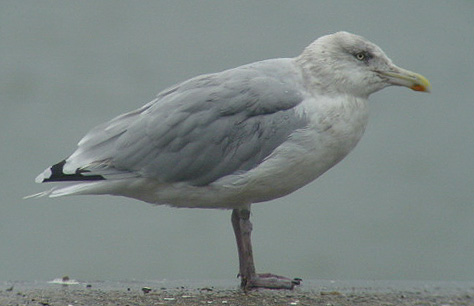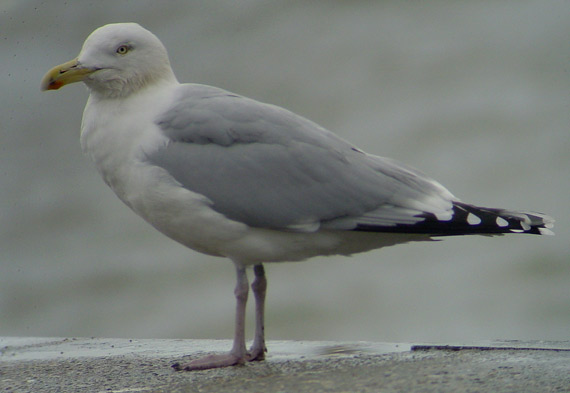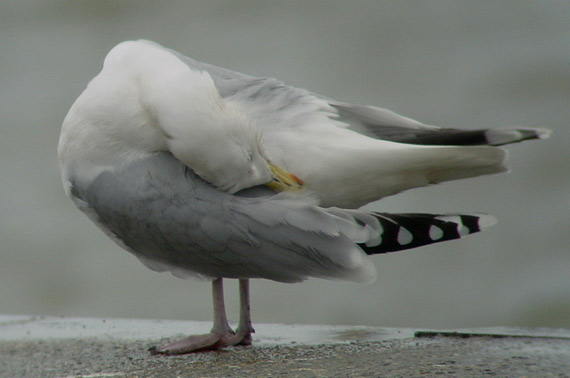 Herring
Gull - Zilvermeeuw (argentatus & argenteus): adult
Herring
Gull - Zilvermeeuw (argentatus & argenteus): adult
(last update: 31 januari 2005)
Home
Links
to Gull Sites
Gull Taxa
Gull Topography
Grey & Colour Charts
Locations in NW Europe
Summaries of Articles
About ORG
@
(4 images) Herring Gull 5.139.994adult (argenteus), October - February, IJmuiden, the Netherlands (52.27N-04.33E).
Ringed as pullus on June 06 1994 at IJmuiden, the Netherlands (52.28N 04.35E). A typical Dutch argenteus, with P10 still present in the left wing and P7 slightly longer than P6. P10 is heavily worn by October. Note the fine head streaking and the on-going moult in the wing-coverts. The upper tertials have been replaced. The central greater coverts and lesser coverts are replaced.
From June (often mid-May in France, Belgium and the Netherlands) to October, a complete moult will bring birds in so-called "adult winter" plumage. A new set of primaries will grow during the summer months and by October, all the old primaries are shed in argenteus in the Netherlands and northern France. In adults, the new primaries are visible beneath the tertials. At the same time, the wing-covert moult is completed by the end of the month. In summer, the head is still largely white, but by September, most adults develop extensive 'winter streaking', in sub-adults strongly mottled brown contrasting with the white breast as in an executioner's hood. The scapular coverts are plain grey, lacking white crescents. The tertials show obvious white tips. The iris is yellow. The bill is yellow with a red gonydeal spot confined to the lower mandible. The orbital ring is yellow-orange in most argenteus.


2 images above: 5.139.994, October 22 2002, IJmuiden, the Netherlands (52.27N-04.33E).
2 images below: 5.139.994, February 04 2003, IJmuiden, the Netherlands (52.27N-04.33E).
A Dutch ringed adult:
Arnhem 5.139.994. A typical Dutch argenteus. Adult argenteus
may already return to the colonies in January-February, maybe depending on
the weather conditions (mild winters north
to 53° latitude along the coast of the North Sea). It's
unknown in what way and to what extend weather conditions influence body
feather moult, but from January onwards, adults may appear with snow-white
heads. From late January and certainly from the first week of
February, males start defending territories on the roofs of the industrial
complexes in the harbour of IJmuiden and in the colonies of the Maasvlakte,
near Rotterdam.
From the second week of February onwards, adult argenteus
from the Netherlands are in active moult on the head. This is often
obvious in the feathers around the eye, which are shed by the second week
of February, leaving a naked ring around the eye (visible at close range).
Note the orange orbital ring and the limited black on the bill (possible
in full adult birds).

